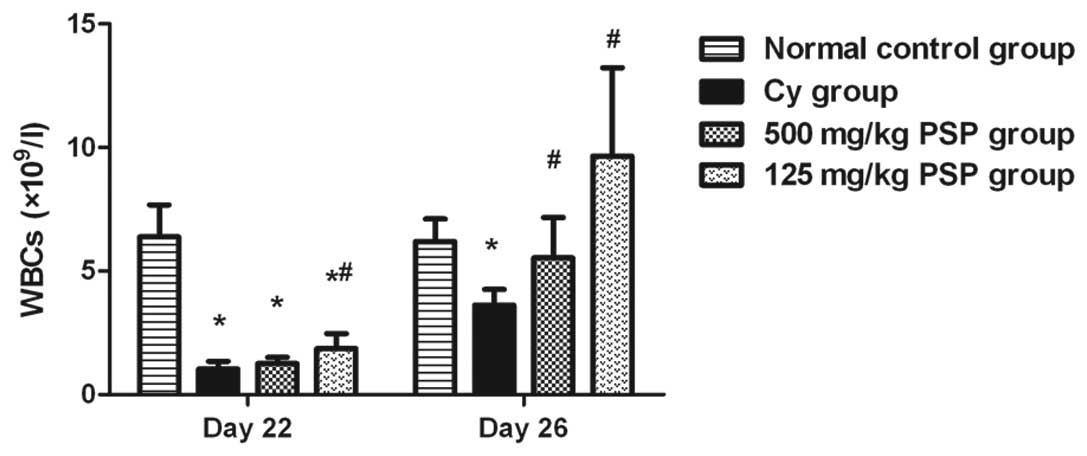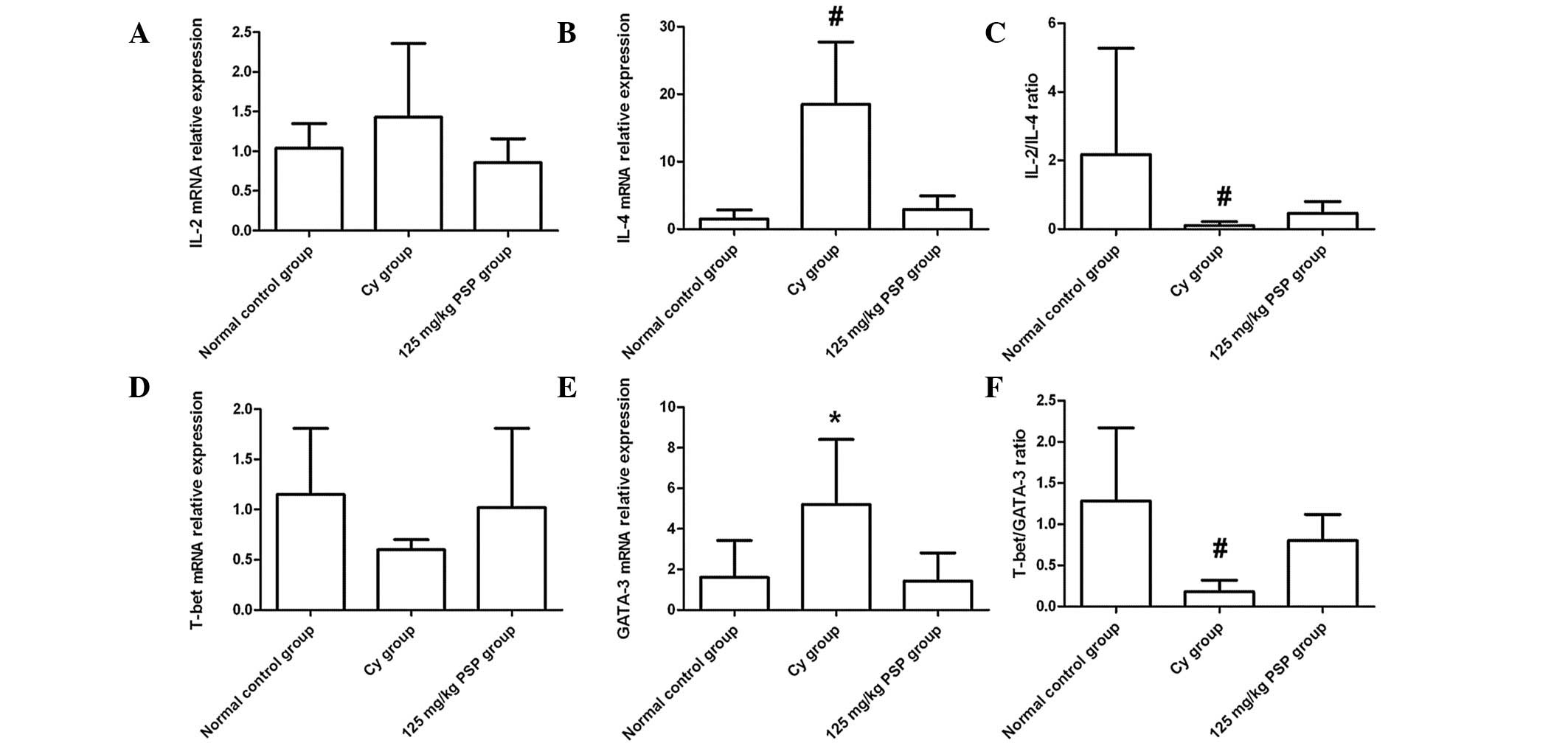|
1
|
Hyde HA and Adams KF: Airborne allergens
at Cardiff 1942–59. Acta Allergol Suppl (Copenh). 7:159–169.
1960.PubMed/NCBI
|
|
2
|
Chu KK, Ho SS and Chow AH: Coriolus
versicolor: a medicinal mushroom with promising
immunotherapeutic values. J Clin Pharmacol. 42:976–984. 2002.
View Article : Google Scholar
|
|
3
|
Yang MM, Chen Z and Kwok JS: The
anti-tumor effect of a small polypeptide from Coriolus
versicolor (SPCV). Am J Chin Med. 20:221–232. 1992. View Article : Google Scholar : PubMed/NCBI
|
|
4
|
Cui J and Chisti Y: Polysaccharopeptides
of Coriolus versicolor: physiological activity, uses, and
production. Biotechnol Adv. 21:109–122. 2003.
|
|
5
|
Ng TB: A review of research on the
protein-bound polysaccharide (polysaccharopeptide, PSP) from the
mushroom Coriolus versicolor (Basidiomycetes: Polyporaceae).
Gen Pharmacol. 30:1–4. 1998. View Article : Google Scholar : PubMed/NCBI
|
|
6
|
Kidd PM: The use of mushroom glucans and
proteoglycans in cancer treatment. Altern Med Rev. 5:4–27.
2000.PubMed/NCBI
|
|
7
|
Collins RA and Ng TB: Polysaccharopeptide
from Coriolus versicolor has potential for use against human
immunodeficiency virus type 1 infection. Life Sci. 60:PL383–PL387.
1997.PubMed/NCBI
|
|
8
|
Yang X, Sit WH, Chan DK and Wan JM: The
cell death process of the anticancer agent polysaccharide-peptide
(PSP) in human promyelocytic leukemic HL-60 cells. Oncol Rep.
13:1201–1210. 2005.PubMed/NCBI
|
|
9
|
Li J, Bao Y, Lam W, et al:
Immunoregulatory and anti-tumor effects of polysaccharopeptide and
Astragalus polysaccharides on tumor-bearing mice.
Immunopharmacol Immunotoxicol. 30:771–782. 2008. View Article : Google Scholar : PubMed/NCBI
|
|
10
|
Li W, Liu M, Lai S, Xu C, Lu F, Xiao X and
Bao Y: Immunomodulatory effects of polysaccharopeptide (PSP) in
human PBMC through regulation of TRAF6/TLR
immunosignal-transduction pathways. Immunopharmacol Immunotoxicol.
32:576–584. 2010. View Article : Google Scholar : PubMed/NCBI
|
|
11
|
Lee CL, Jiang PP, Sit WH and Wan JM:
Proteome of human T lymphocytes with treatment of cyclosporine and
polysaccharopeptide: analysis of significant proteins that
manipulate T cells proliferation and immunosuppression. Int
Immunopharmacol. 7:1311–1324. 2007. View Article : Google Scholar : PubMed/NCBI
|
|
12
|
Shin H and Wherry EJ: CD8 T cell
dysfunction during chronic viral infection. Curr Opin Immunol.
19:408–415. 2007. View Article : Google Scholar : PubMed/NCBI
|
|
13
|
Wherry EJ: T cell exhaustion. Nat Immunol.
12:492–499. 2011. View
Article : Google Scholar
|
|
14
|
Huyan XH, Lin YP, Gao T, Chen RY and Fan
YM: Immunosuppressive effect of cyclophosphamide on white blood
cells and lymphocyte subpopulations from peripheral blood of Balb/c
mice. Int Immunopharmacol. 11:1293–1297. 2011. View Article : Google Scholar : PubMed/NCBI
|
|
15
|
Tornatore KM, Reed K and Venuto R: 24-hour
immunologic assessment of CD4+ and CD8+
lymphocytes in renal transplant recipients receiving chronic
methylprednisolone. Clin Nephrol. 44:290–298. 1995.PubMed/NCBI
|
|
16
|
Huang GC, Wu LS, Chen LG, Yang LL and Wang
CC: Immuno-enhancement effects of Huang Qi Liu Yi Tang in a murine
model of cyclophosphamide-induced leucopenia. J Ethnopharmacol.
109:229–235. 2007. View Article : Google Scholar : PubMed/NCBI
|
|
17
|
de Jonge ME, Huitema AD, Rodenhuis S and
Beijnen JH: Clinical pharmacokinetics of cyclophosphamide. Clin
Pharmacokinet. 44:1135–1164. 2005.
|
|
18
|
Schiavoni G, Mattei F, Di Pucchio T,
Santini SM, Bracci L, Belardelli F and Proietti E: Cyclophosphamide
induces type I interferon and augments the number of CD44(hi) T
lymphocytes in mice: implications for strategies of
chemoimmunotherapy of cancer. Blood. 95:2024–2030. 2000.PubMed/NCBI
|
|
19
|
Zhu XL, Chen AF and Lin ZB: Ganoderma
lucidum polysaccharides enhance the function of immunological
effector cells in immunosuppressed mice. J Ethnopharmacol.
111:219–226. 2007. View Article : Google Scholar
|
|
20
|
Bafna AR and Mishra SH: Immunostimulatory
effect of methanol extract of Curculigo orchioides on
immunosuppressed mice. J Ethnopharmacol. 104:1–4. 2006. View Article : Google Scholar : PubMed/NCBI
|
|
21
|
Bafna AR and Mishra SH: Protective effect
of bioactive fraction of Sphaeranthus indicus Linn. against
cyclophosphamide induced suppression of humoral immunity in mice. J
Ethnopharmacol. 104:426–429. 2006.PubMed/NCBI
|
|
22
|
Gergely P: Drug-induced lymphopenia: focus
on CD4+ and CD8+ cells. Drug Saf. 21:91–100.
1999. View Article : Google Scholar : PubMed/NCBI
|
|
23
|
Bao YX, Wong CK, Leung SF, et al: Clinical
studies of immunomodulatory activities of Yunzhi-Danshen in
patients with nasopharyngeal carcinoma. J Altern Complement Med.
12:771–776. 2006. View Article : Google Scholar : PubMed/NCBI
|
|
24
|
Wong CK, Bao YX, Wong EL, Leung PC, Fung
KP and Lam CW: Immunomodulatory activities of Yunzhi and Danshen in
post-treatment breast cancer patients. Am J Chin Med. 33:381–395.
2005. View Article : Google Scholar : PubMed/NCBI
|
|
25
|
Abbas AK, Murphy KM and Sher A: Functional
diversity of helper T lymphocytes. Nature. 383:787–793. 1996.
View Article : Google Scholar : PubMed/NCBI
|
|
26
|
Warren HS, Vogel FR and Chedid LA: Current
status of immunological adjuvants. Annu Rev Immunol. 4:369–388.
1986. View Article : Google Scholar : PubMed/NCBI
|
|
27
|
Blachère NE, Morris HK, Braun D, Saklani
H, Di Santo JP, Darnell RB and Albert ML: IL-2 is required for the
activation of memory CD8+ T cells via antigen
cross-presentation. J Immunol. 176:7288–7300. 2006.
|
|
28
|
Lafreniere JF, Mills P, Bouchentouf M and
Tremblay JP: Interleukin-4 improves the migration of human myogenic
precursor cells in vitro and in vivo. Exp Cell Res. 312:1127–1141.
2006. View Article : Google Scholar : PubMed/NCBI
|
|
29
|
Bowen H, Kelly A, Lee T and Lavender P:
Control of cytokine gene transcription in Th1 and Th2 cells. Clin
Exp Allergy. 38:1422–1431. 2008. View Article : Google Scholar : PubMed/NCBI
|
|
30
|
Ho CY, Lau CB, Kim CF, et al: Differential
effect of Coriolus versicolor (Yunzhi) extract on cytokine
production by murine lymphocytes in vitro. Int Immunopharmacol.
4:1549–1557. 2004.
|
|
31
|
Lee CL, Sit WH, Jiang PP, So IW and Wan
JM: Polysaccharopeptide mimics ciclosporin-mediated Th1/Th2
cytokine balance for suppression of activated human T cell
proliferation by MAPKp38 and STAT5 pathways. J Pharm Pharmacol.
60:1491–1499. 2008. View Article : Google Scholar : PubMed/NCBI
|
|
32
|
Baecher-Allan C, Brown JA, Freeman GJ and
Hafler DA: CD4+CD25high regulatory cells in human
peripheral blood. J Immunol. 167:1245–1253. 2001.PubMed/NCBI
|
|
33
|
Fowler S and Powrie F: Control of immune
pathology by IL-10-secreting regulatory T cells. Springer Semin
Immunopathol. 21:287–294. 1999. View Article : Google Scholar : PubMed/NCBI
|
|
34
|
Powrie F, Carlino J, Leach MW, Mauze S and
Coffman RL: A critical role for transforming growth factor-beta but
not interleukin 4 in the suppression of T helper type 1-mediated
colitis by CD45RB(low) CD4+ T cells. J Exp Med.
183:2669–2674. 1996. View Article : Google Scholar : PubMed/NCBI
|
|
35
|
Sakaguchi S, Ono M, Setoguchi R, et al:
Foxp3+ CD25+ CD4+ natural
regulatory T cells in dominant self-tolerance and autoimmune
disease. Immunol Rev. 212:8–27. 2006.
|
|
36
|
Hori S, Nomura T and Sakaguchi S: Control
of regulatory T cell development by the transcription factor Foxp3.
Science. 299:1057–1061. 2003. View Article : Google Scholar : PubMed/NCBI
|
|
37
|
Wan YY and Flavell RA: Regulatory T-cell
functions are subverted and converted owing to attenuated Foxp3
expression. Nature. 445:766–770. 2007. View Article : Google Scholar : PubMed/NCBI
|
|
38
|
Gavin MA, Rasmussen JP, Fontenot JD, Vasta
V, Manganiello VC, Beavo JA and Rudensky AY: Foxp3-dependent
programme of regulatory T-cell differentiation. Nature.
445:771–775. 2007. View Article : Google Scholar : PubMed/NCBI
|
|
39
|
Ishida Y, Agata Y, Shibahara K and Honjo
T: Induced expression of PD-1, a novel member of the immunoglobulin
gene superfamily, upon programmed cell death. EMBO J. 11:3887–3895.
1992.PubMed/NCBI
|
|
40
|
Okazaki T, Iwai Y and Honjo T: New
regulatory co-receptors: inducible co-stimulator and PD-1. Curr
Opin Immunol. 14:779–782. 2002. View Article : Google Scholar : PubMed/NCBI
|
|
41
|
Chen L: Co-inhibitory molecules of the
B7-CD28 family in the control of T-cell immunity. Nat Rev Immunol.
4:336–347. 2004. View Article : Google Scholar : PubMed/NCBI
|
|
42
|
Greenwald RJ, Freeman GJ and Sharpe AH:
The B7 family revisited. Annu Rev Immunol. 23:515–548. 2005.
View Article : Google Scholar : PubMed/NCBI
|
|
43
|
Liang SC, Latchman YE, Buhlmann JE,
Tomczak MF, Horwitz BH, Freeman GJ and Sharpe AH: Regulation of
PD-1, PD-L1, and PD-L2 expression during normal and autoimmune
responses. Eur J Immunol. 33:2706–2716. 2003. View Article : Google Scholar : PubMed/NCBI
|
|
44
|
Rodig N, Ryan T, Allen JA, et al:
Endothelial expression of PD-L1 and PD-L2 down-regulates
CD8+ T cell activation and cytolysis. Eur J Immunol.
33:3117–3126. 2003. View Article : Google Scholar : PubMed/NCBI
|
|
45
|
Seo SK, Seo HM, Jeong HY, et al:
Co-inhibitory role of T-cell-associated B7-H1 and B7-DC in the
T-cell immune response. Immunol Lett. 102:222–228. 2006. View Article : Google Scholar : PubMed/NCBI
|
|
46
|
Ding H, Wu X and Gao W: PD-L1 is expressed
by human renal tubular epithelial cells and suppresses T cell
cytokine synthesis. Clin Immunol. 115:184–191. 2005. View Article : Google Scholar : PubMed/NCBI
|
|
47
|
Ishida M, Iwai Y, Tanaka Y, Okazaki T,
Freeman GJ, Minato N and Honjo T: Differential expression of PD-L1
and PD-L2, ligands for an inhibitory receptor PD-1, in the cells of
lymphohematopoietic tissues. Immunol Lett. 84:57–62. 2002.
View Article : Google Scholar : PubMed/NCBI
|
|
48
|
Parry RV, Chemnitz JM, Frauwirth KA, et
al: CTLA-4 and PD-1 receptors inhibit T-cell activation by distinct
mechanisms. Mol Cell Biol. 25:9543–9553. 2005. View Article : Google Scholar : PubMed/NCBI
|
|
49
|
Chemnitz JM, Parry RV, Nichols KE, June CH
and Riley JL: SHP-1 and SHP-2 associate with immunoreceptor
tyrosine-based switch motif of programmed death 1 upon primary
human T cell stimulation, but only receptor ligation prevents T
cell activation. J Immunol. 173:945–954. 2004. View Article : Google Scholar : PubMed/NCBI
|
|
50
|
Kim HK, Guan H, Zu G, et al: High-level
expression of B7-H1 molecules by dendritic cells suppresses the
function of activated T cells and desensitizes allergen-primed
animals. J Leukoc Biol. 79:686–695. 2006. View Article : Google Scholar : PubMed/NCBI
|
|
51
|
Barber DL, Wherry EJ, Masopust D, et al:
Restoring function in exhausted CD8 T cells during chronic viral
infection. Nature. 439:682–687. 2006. View Article : Google Scholar : PubMed/NCBI
|
|
52
|
Fiorentino DF, Bond MW and Mosmann TR: Two
types of mouse T helper cell. IV Th2 clones secrete a factor that
inhibits cytokine production by Th1 clones. J Exp Med.
170:2081–2095. 1989. View Article : Google Scholar : PubMed/NCBI
|
|
53
|
Moore KW, Vieira P, Fiorentino DF,
Trounstine ML, Khan TA and Mosmann TR: Homology of cytokine
synthesis inhibitory factor (IL-10) to the Epstein-Barr virus gene
BCRFI. Science. 248:1230–1234. 1990. View Article : Google Scholar
|
|
54
|
Mosser DM and Zhang X: Interleukin-10: new
perspectives on an old cytokine. Immunol Rev. 226:205–218. 2008.
View Article : Google Scholar : PubMed/NCBI
|
|
55
|
O’Garra A and Vieira P: T(H)1 cells
control themselves by producing interleukin-10. Nat Rev Immunol.
7:425–428. 2007.PubMed/NCBI
|












